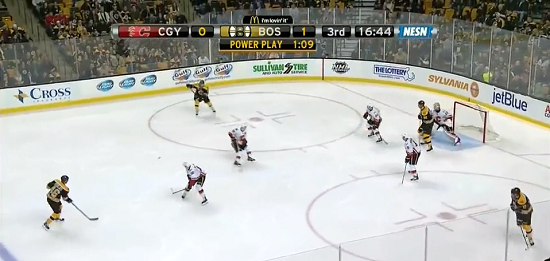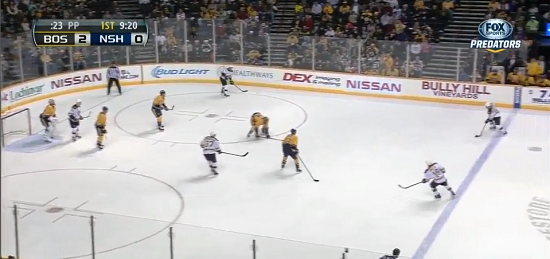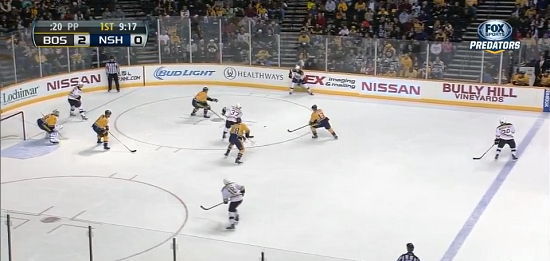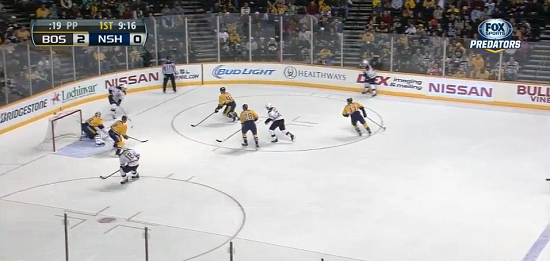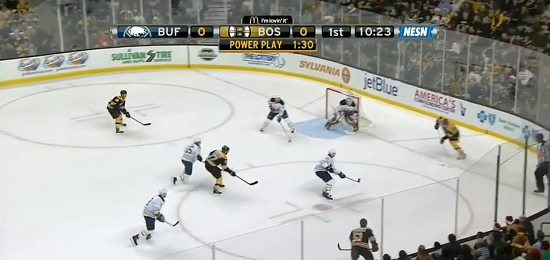A New Approach for the Bruins Powerplay
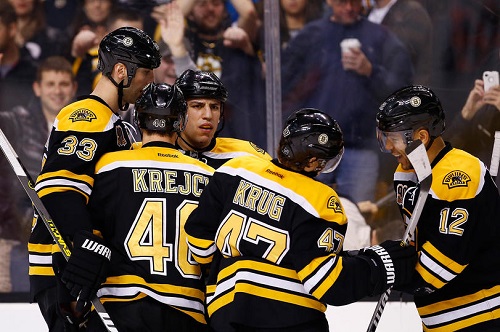
Ever since Matt Cooke delivered an elbow under Marc Savard’s chinstrap, the idea of the Boston Bruins having a top-ten power play has been more of a dream than a reality. In Savard’s absence, Boston’s struggled to be average on the man advantage, and finished last season in the bottom third (26th out of 30 teams). But we’re more than a third of the way through the 2013-14 NHL season, and not only are the Bruins in the top-ten, they’re currently sitting in the top-five, alongside teams like Pittsburgh, Washington, and Chicago. So what’s the difference? It’s not just an influx of some new personnel. The Bruins best power play weapon has been the whiteboard.
Don’t get me wrong, adding rookie Torey Krug to the blue line coupled with the emergence of Carl Soderberg has certainly added more pop to the power play, but it’s tough to believe that Bruins couldn’t crack the league’s top ten until they acquired someone like Reilly Smith. For Boston, it’s less about who’s on the ice and more about what they’re doing while they’re out there. Without getting into the X’s and O’s too much (don’t worry, that comes later), for the past few years, the Bruins power play has relied heavily on opening up shots from the point by their defensemen. On paper, it’s not a bad idea: Zdeno Chara and Johnny Boychuck possess two of the fastest shots in the league, and those shots are heavy enough to produce rebounds right in front of the net. Given that strategy, it shouldn’t be surprising that Chara has led the Bruins in power play goals since 2011. But it wasn’t good enough, and the Bruins power play was letting the team down in key moments, again and again.
This year, there’s a different approach, and it’s been a completely different story. Currently, the Bruins roll out two different power play units, and each employs their own strategy. Boston’s first unit features Krug, David Krejci, Milan Lucic, Jarome Iginla, and Chara, but rather than looking to get Chara a shot from the point, the Bruins have put the 6’9” defenseman directly in front of the opposition’s goaltender and placed playmaker Krejci at the point.
It’s pretty evident that Calgary’s goaltender Reto Berra isn’t having an easy time seeing around Chara, and when Krejci sets up Iginla for a one timer, Berra can’t handle the shot cleanly. The rebound drops right to Chara (whose size makes him a nightmare for defensemen to box out), and he puts the puck past Berra for the goal. Moving Chara from the blue line to the front of the net is paying dividends for Boston, and Chara has already scored six power play goals (his season high hasn’t been higher than eight since Savard went down).
The personnel on Boston’s second unit hasn’t been as consistent due to injuries, but the key pieces of Patrice Bergeron, Smith, and Soderberg have been mainstays since the starts. Compared to the first unit, they lack the size of Chara or Lucic, so crowding the front of the net isn’t really a viable option. Instead, this group has been employing a very well designed backdoor play that’s been tough for opponents to stop. They start by overloading one side by putting all five players on the far side of the ice (forcing, in this case, Nashville to commit all four penalty killers to one side as well).
After moving the puck to player on the sidewall (here, it’s Ryan Spooner), the Bruins pass the puck to Bergeron sitting in between three Nashville defenders. Each defender is forced to converge on Bergeron because he’s in such a dangerous area offensively, and this allows two things to happen simultaneously: it opens up a lane so that Bergeron can pass the puck to Soderberg down by the goal line, and it allows Smith to skate from the point to the front of the net.
Next, Bergeron can make an easy pass to Soderberg with Smith closing in on the net. Once Soderberg has the puck, the defenseman in front of the net has to make a tough decision: he can either cover Smith and allow Soderberg to walk right in on the goalie, or he can play the puck and leave Smith wide open on other side of the net. Here, the defender (Kevin Klein) tries to pressure Soderberg, and Smith gets a pass that he can fire into the net to score.
For Bruins fans, that play should look familiar. They ran it just two nights earlier against the Sabres, with the exact same result.
Bergeron passes it to Soderberg, Soderberg finds Smith skating in from the blue line, and Smith puts it past Jhonas Enroth for the goal.
Now, it’s only a matter of time until other teams get wise to what Boston’s doing, and after running that backdoor play to Smith in two consecutive games, teams will absolutely be on the lookout for the play in the future. But that’s the nature of the NHL (there are no secrets when everyone gets the game film), and it’ll be up to the Bruins to adjust and run different plays with the same personnel. Most importantly, Boston has shown a willingness to make the power play a priority, and that’s something that’s been missing since Savard was calling the shots. The Bruins might not end the year in the top five, but for the first time in a while, Boston’s power play is a weapon. And if it stops being effective, well, they’ll just take it back to the whiteboard.

